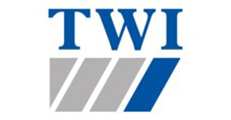CHALLENGE
Use of nickel and titanium parts for civil aircrafts drives the demand for laser-based welding because of the connected boost in productivity and quality of the final part. The low heat that laser welding introduces into the welded material makes it a prime choice in manufacturing. However, the laser welding process has stricter requirements for material preparation and fit-up of the abutting sheets and plates as a result of material vaporisation, fast welding speeds and, subsequently, a highly dynamic process. Process monitoring systems commonly use a seam tracker to detect geometrical mismatch and a vision systems for detecting surface defects in the melt pool. These sensor systems have concrete limits. Close or too distant butting edges often do not produce sufficient signals to detect the seam or lots of light during the welding process disturbs the image captured by camera and affects overall performance of the monitoring capability. A missing integration of seam tracker signals and vision/infrared camera images most often lead to an incomplete or a misaligned picture of the weld.
BENEFIT
If the INNOSEAM assessment manages to provide a viable solution to the challenge, then laser-based welding of structural components from nickel and titanium will receive an improved joint integrity and better fatigue performance. The adaptive control system will combine the information from the seam tracking device and the signals from the laser fibre and evaluate them in real-time. Based on the validation runs, a database will be established that maps the signal events to welding defects for later analysis and algorithm development. Once validated, the INNOSEAM can be transferred to other application areas where the detection of process deviations in welding support the overall manufacturing outcome.
ACHIEVEMENT
The latest seam tracking hardware and software developed by the INNOSEAM project, and shortly available commercially from Permanova, not only offers through-optics camera tracking of joints during welding, the equipment can also be tailored to log and flag warnings to the operator when weld quality deviates outside customer-defined acceptance limits. With a reliable quality monitoring system then in place the need for post-weld inspections can be reduced. This can be achieved without resorting to bulky equipment off-axis, as joint illumination built in to the coaxial nozzle, a compact seam tracking camera and integrated photodiodes work together to collect, present and analyse welding process monitoring data in real time. There is no need for any additional equipment, with the INNOSEAM system therefore representing a cost-effective improvement for in-process monitoring of key parameters
 Fraunhofer Institute for Laser Technology ILT
Fraunhofer Institute for Laser Technology ILT

